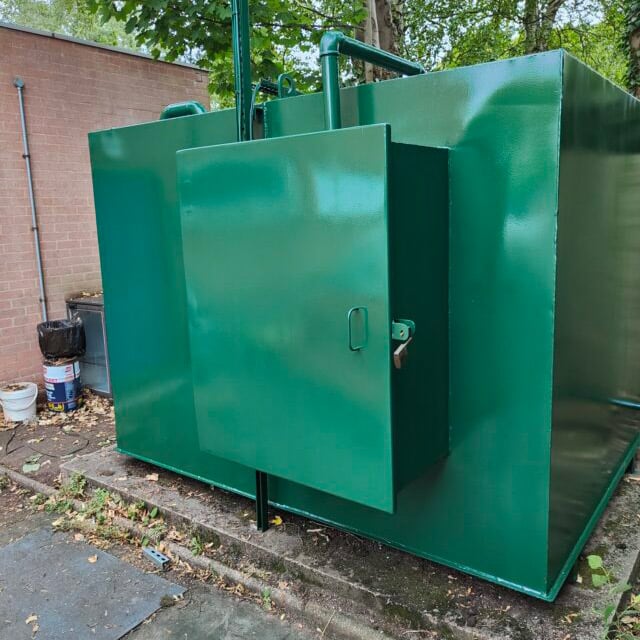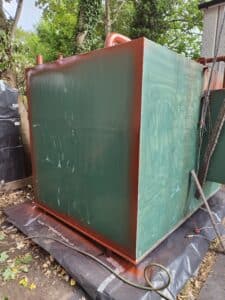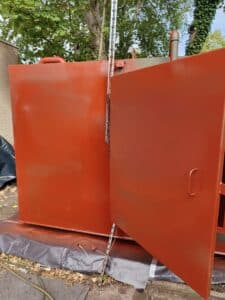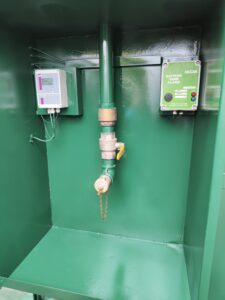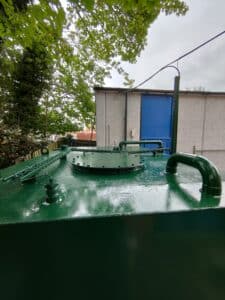Fuel Tank Refurbishment – The Process
Below is an insight into the process of what a fuel tank refurbishment looks like. We were asked by a customer in Birmingham to safely empty and clean internally an 8000 litre diesel storage tank, as well as polish and clean the fuel. Not only was the tank to be cleaned internally, but the outside needed to be refurbished and brought back to life. This particular job was over a two day period.
An Introduction
We needed to clean the inside of the tank before any work could begin. This meant pumping out the fuel that was already in there (approximately 3000 litres) into IBC’s. An operative then got to work inside the tank. With full breathing appartus on they began methodically cleaning the internals of the tank.
After the tank had been cleaned internally to a high standard, the process of fuel polishing can then begin. The fuel was then filtered, cleaned and pumped back into the tank. See more about fuel polishing here: https://jwhinchliffetanks.co.uk/commercial-tank-services-overview/fuel-polishing/.
What’s Next?
So, thats the inside taken care of, but what about the outside?
The entire tank needed to be sanded down in preparation for priming and painting to ensure the paint sticks. This involved using an angle grinder, to effectively and efficiently make the surface of the tank smooth and free of rust. The location of the tank meant the roof was not in the best condition. The tank was sat under a canopy of trees. This meant that when it rained the roof would pool with water and collect puddles of sitting water. Furthermore, dead leaves and other objects could drop on to it and rot, increasing the likelihood of rust forming quicker than if it was away from such a location.
Once the rust had been removed, the priming was next. This involved setting up, essentially, a giant airbrush. Red Oxide was then sprayed over the entire tank. Two coats were evenly applied for maximum protection. Red Oxide is used as a metal primer and is a protective coating that prevents rust formation on metal surfaces when exposed to varying humidity and air conditions.
Once the Red Oxide had fully dried 3 coats of Green Enamel paint were then appiled using the same method. Enamel paint is known for it durability and metal is a good substrate for application, particularly when sprayed on.
Completion
The tank has now completed its refurbishment, and as you can see from the images below, it makes such a difference. The customer was very happy with the work we carried out.
J. W. Hinchliffe (Tanks) Ltd
As a company, J W Hinchliffe (Tanks) Ltd have specialised in fuel and oil tank decommissioning for nearly 50 years. Using our own in-house team, we can offer a bespoke service to meet the needs of any client, from transport operators, to the construction and public sectors. If you would like to know more about the services we offer, please see our services page. If you would like to contact us directly, you can email [email protected] or call directly on 01132635163 where you can speak immediately to an experienced tank decommissioning engineer. All of our work is carried out in line with current best practice and legislation. You can read more industry news through organisations such as the APEA (Association for Petroleum & Explosives Administration) by clicking here. You can follow us across our many social media channels here – Linkedin, Instagram and Facebook

